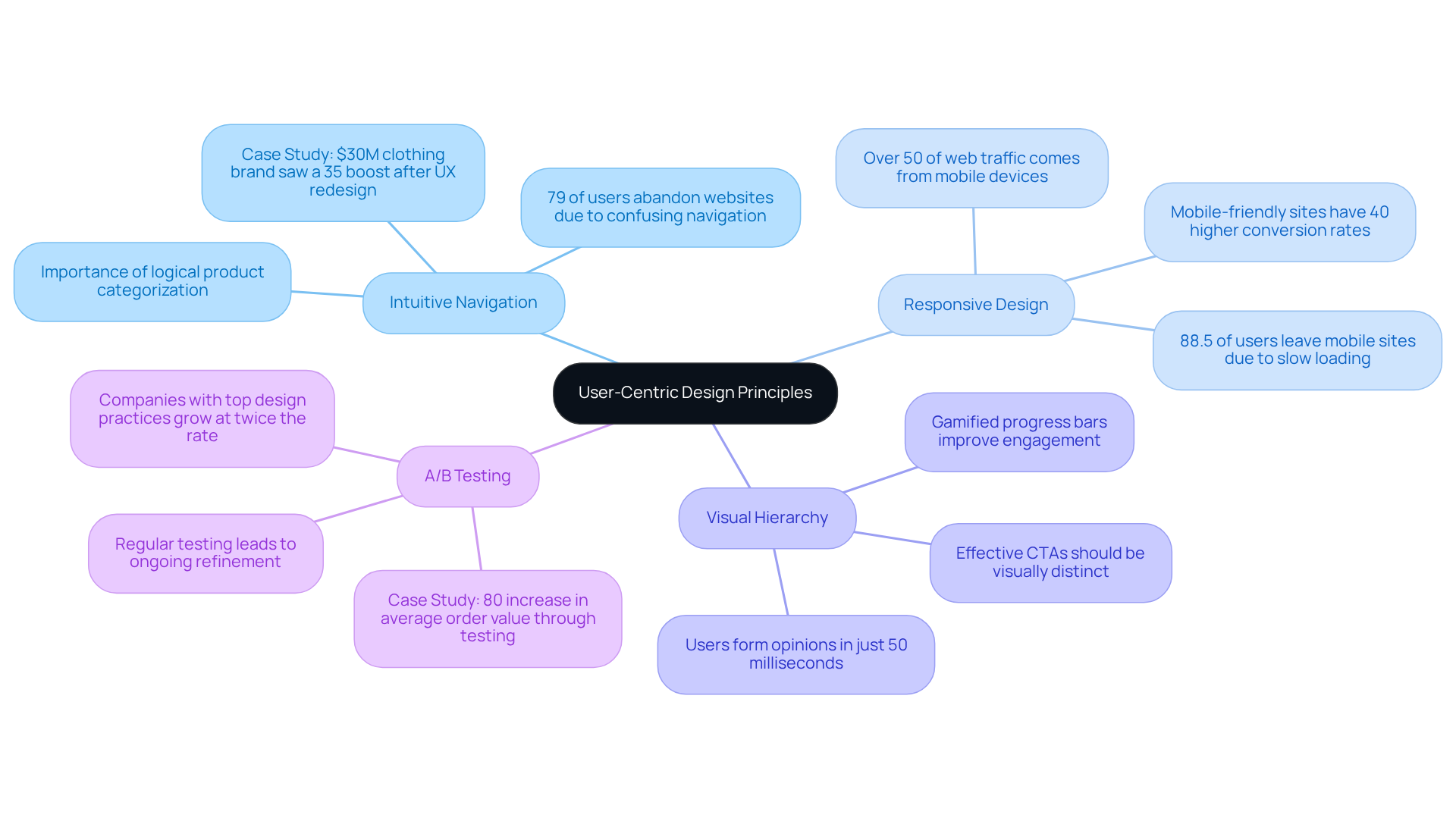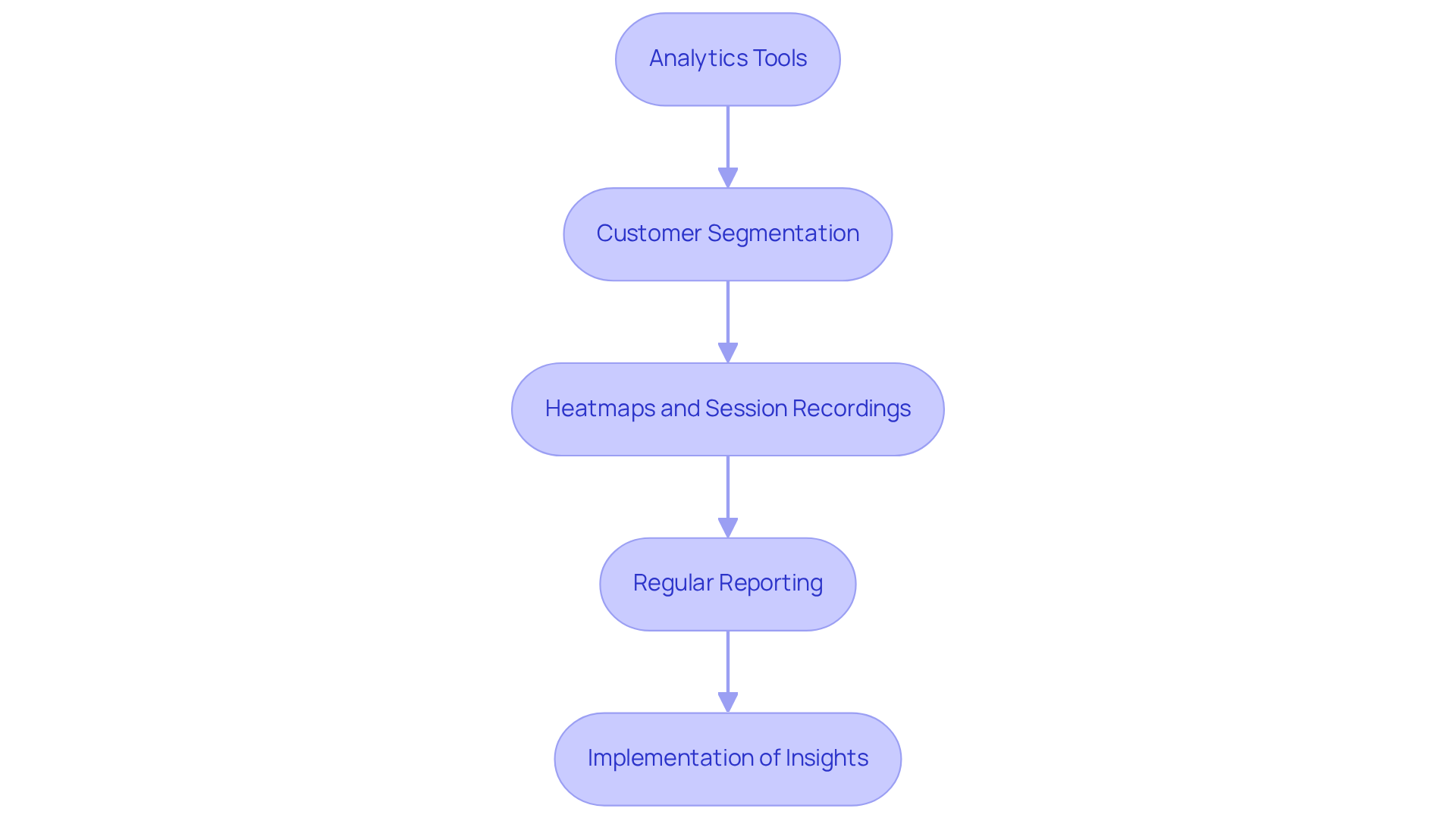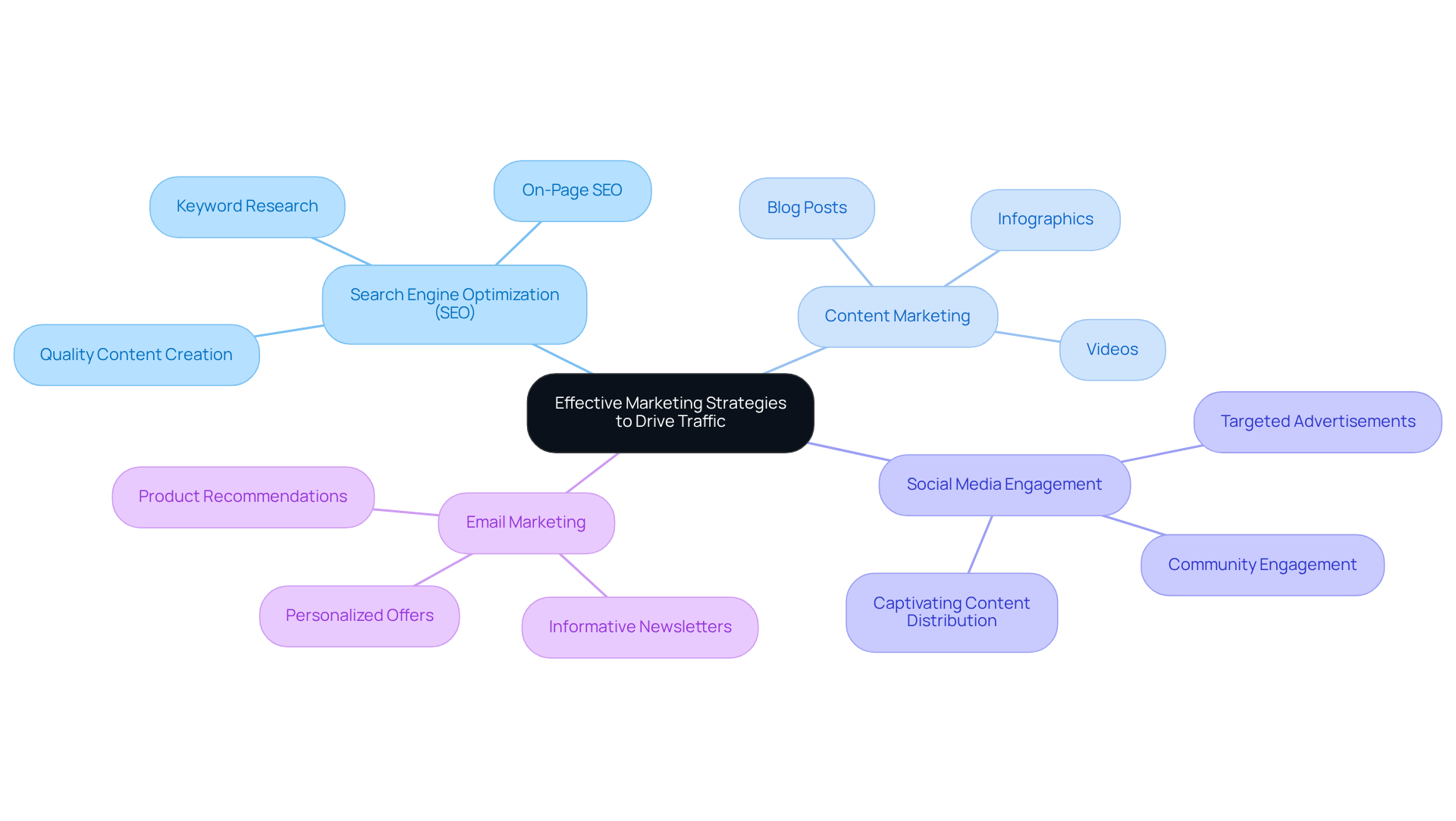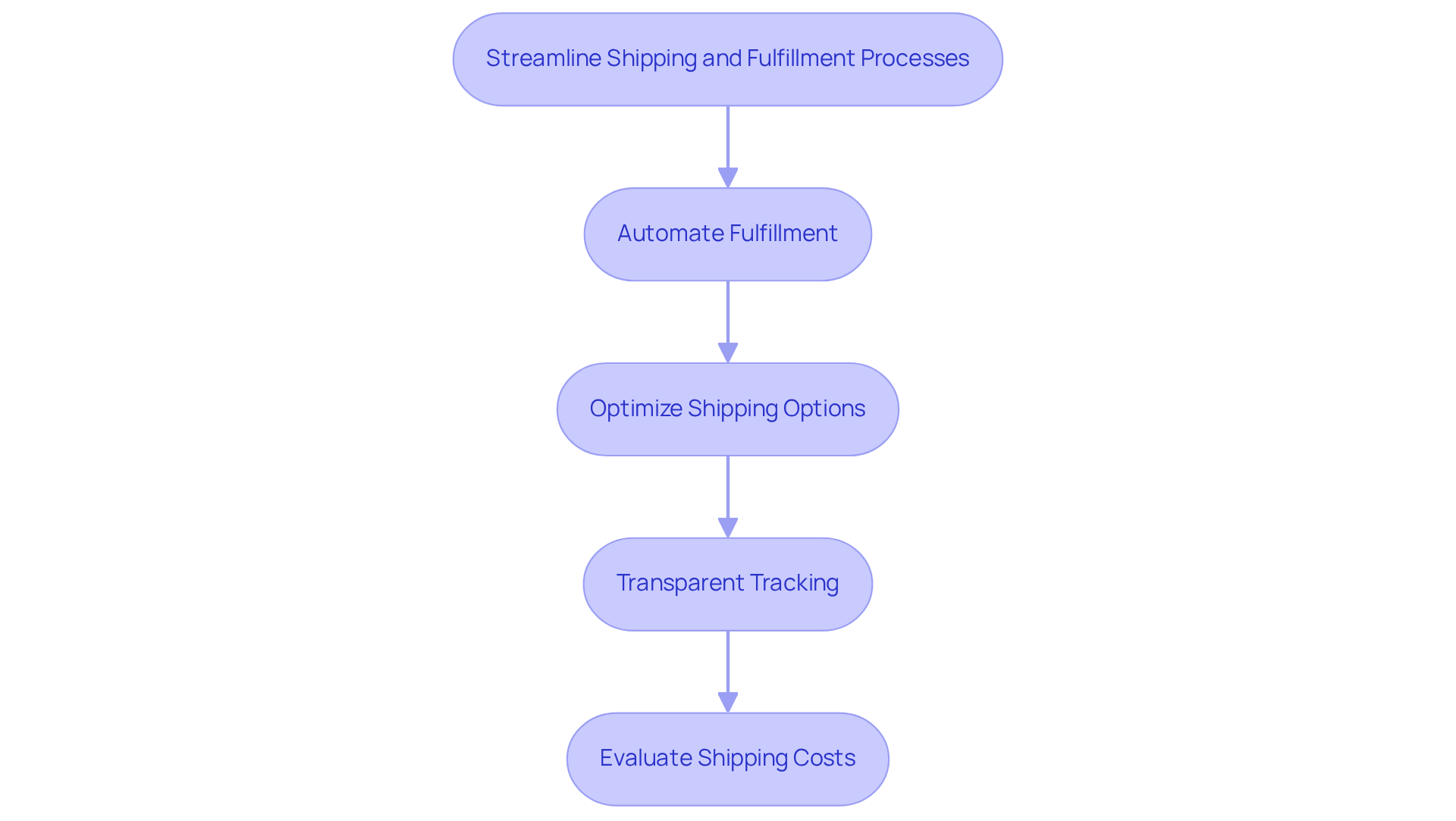
Overview
This article highlights best practices for enhancing the success of direct-to-consumer (DTC) e-commerce brands. By implementing user-centric design principles, leveraging data-driven insights, employing effective marketing strategies, and optimizing streamlined shipping processes, brands can significantly elevate their performance.
Specific strategies and compelling statistics underscore this approach, illustrating the profound impact of intuitive navigation on sales performance and the critical importance of mobile optimization. Such practices not only enhance the customer experience but also drive substantial growth.
Introduction
Crafting a successful direct-to-consumer (DTC) brand in the ever-evolving e-commerce landscape requires more than just a great product; it demands a strategic approach to user experience and operational efficiency.
Implementing best practices focused on user-centric design, data-driven insights, and effective marketing strategies significantly enhances visibility and customer satisfaction.
However, the challenge remains: how can businesses navigate the complexities of e-commerce to attract customers and foster long-term loyalty amidst fierce competition?
This question is crucial as brands strive not only to stand out but also to build enduring relationships with their clientele.
Implement User-Centric Design Principles
To elevate your DTC brand's success, it is imperative to prioritize user-centric design principles that cater to your audience's needs and preferences. Key practices include:
- Intuitive Navigation: A well-structured website with intuitive navigation is essential for guiding users through the shopping experience. Distinct classifications and a powerful search feature enable individuals to locate items swiftly, greatly influencing sales performance. Research indicates that 79% of users abandon websites due to confusing navigation, underscoring the necessity of a streamlined user journey. An analysis of a $30M clothing brand that collaborated with Parah Group revealed that a thorough UX redesign resulted in a 35% boost in overall success, demonstrating the profound impact of user-friendly navigation.
- Responsive Design: With over 50% of web traffic originating from mobile devices, optimizing your site for mobile is crucial. Mobile-friendly websites experience conversion rates that are 40% higher than their non-optimized counterparts. Ensuring a seamless experience across devices can significantly enhance client retention and satisfaction. Notably, 88.5% of visitors leave mobile sites due to slow loading times, highlighting the critical need for responsive design.
- Visual Hierarchy: Employ design elements strategically to guide individuals' attention to key information, such as calls to action and product details. Effective visual hierarchy can enhance visitor engagement, as individuals form opinions about a website in just 50 milliseconds. For instance, Parah Group's implementation of gamified progress bars and complimentary gifts for specific cart sizes has proven to greatly improve user engagement and success, illustrating the effect of visual hierarchy on user behavior.
- A/B Testing: Regularly conducting A/B testing on various design elements is essential to determine what resonates best with your audience. This enables ongoing refinement, resulting in enhanced conversion figures. Companies that implement top design practices, including UX, tend to grow at twice the rate of those that do not. As evidenced by Parah Group's collaboration with brands like Grab Green, which experienced an 80% increase in average order value through strategic testing and optimization, A/B testing is vital for sustained growth.
By concentrating on these principles, you can establish a smooth shop ecommerce experience that not only promotes sales but also fosters long-term customer loyalty. However, be vigilant of common pitfalls, such as overwhelming individuals with too many options or poorly implemented navigation structures, which can detract from the overall experience.

Utilize Data-Driven Insights for Optimization
Harnessing data-driven insights is essential for refining your e-commerce strategy. Here are key steps to implement:
- Analytics Tools: Leverage platforms like Google Analytics to monitor user behavior, conversion rates, and traffic sources. This data is crucial for pinpointing areas needing improvement. Businesses utilizing analytics tools are 1.7 times more likely to increase market share compared to those relying on traditional methods.
- Customer Segmentation: Dive into customer data to segment your audience based on behavior, preferences, and demographics. Tailoring marketing efforts to each segment can significantly enhance engagement and conversion rates.
- Heatmaps and Session Recordings: Utilize heatmaps and session recordings to visualize interactions on your site. These tools can uncover pain points and identify where users tend to drop off, allowing for targeted improvements.
- Regular Reporting: Set a routine for reviewing analytics reports to stay updated on performance trends. This practice enables to your strategies, ensuring you remain responsive to market changes.
By consistently applying these data-driven insights, you can refine your approach and significantly boost the effectiveness of your e-commerce operations.

Adopt Effective Marketing Strategies to Drive Traffic
To drive traffic to your DTC brand, it is essential to adopt that can significantly enhance your visibility and attract potential customers to your shop ecommerce site.
- Search Engine Optimization (SEO): Optimize your website for search engines to improve organic visibility. Focus on comprehensive keyword research, on-page SEO, and the creation of quality content that resonates with your target audience.
- Content Marketing: Develop valuable content that engages your audience, including blog posts, videos, and infographics. This approach not only attracts visitors but also positions your brand as an authority in your field.
- Social Media Engagement: Leverage social media platforms to connect with your audience effectively. Distribute captivating content, execute targeted advertisements, and actively engage with followers to foster a community around your business.
- Email Marketing: Craft a robust email marketing strategy to nurture leads and retain customers. Send personalized offers, product recommendations, and informative newsletters to keep your audience engaged and informed.
Implementing these strategies will not only enhance your company's visibility in the shop ecommerce market but also create a strong foundation for attracting more potential customers.

Streamline Shipping and Fulfillment Processes
To elevate your DTC brand's success, it is essential to streamline your shipping and fulfillment processes by implementing the following best practices:
- Automate Fulfillment: Leverage automation tools to effectively manage inventory, order processing, and shipping notifications. This approach minimizes manual errors and accelerates the fulfillment process.
- Optimize Shipping Options: Provide a variety of shipping options to accommodate different customer preferences. Establish partnerships with reliable carriers to ensure timely deliveries.
- Transparent Tracking: Equip customers with tracking information for their orders. This transparency fosters trust and keeps customers informed about their purchases.
- Evaluate Shipping Costs: Consistently assess your shipping costs and investigate opportunities to reduce expenses, such as negotiating rates with carriers or adopting flat-rate shipping.
By concentrating on these critical areas, you can enhance the efficiency of your shipping and fulfillment processes, resulting in heightened customer satisfaction and increased sales.

Conclusion
Elevating a direct-to-consumer (DTC) brand in the competitive e-commerce landscape necessitates a multifaceted approach that prioritizes user experience, data-driven strategies, and effective marketing. By emphasizing user-centric design principles, businesses can forge intuitive and engaging online shopping experiences that not only attract customers but also encourage repeat visits and foster loyalty.
Key insights reveal the critical nature of intuitive navigation, responsive design, and the strategic application of visual hierarchy to bolster user engagement. Moreover, leveraging data analytics for customer segmentation and performance monitoring empowers brands to make informed decisions that drive conversions. Implementing effective marketing strategies—including SEO, content marketing, and social media engagement—further amplifies visibility and customer reach. Finally, streamlining shipping and fulfillment processes is essential for maintaining customer satisfaction and ensuring timely deliveries.
In conclusion, the adoption of these best practices is crucial for DTC brands aspiring to thrive in the e-commerce market. By embracing user-centric design, harnessing data for continuous improvement, and executing robust marketing strategies, brands can not only enhance their online presence but also cultivate lasting relationships with their customers. As the e-commerce landscape continues to evolve, staying informed of current trends and adapting strategies accordingly will be vital for sustained success.
Frequently Asked Questions
What are user-centric design principles, and why are they important for DTC brands?
User-centric design principles prioritize the needs and preferences of the audience, making the shopping experience more intuitive and enjoyable. They are crucial for the success of DTC brands as they directly influence user engagement, sales performance, and customer loyalty.
How does intuitive navigation impact user experience on a website?
Intuitive navigation helps guide users through the shopping experience, allowing them to locate items quickly. Research shows that 79% of users abandon websites due to confusing navigation, highlighting the importance of a streamlined user journey.
What is the significance of responsive design for e-commerce websites?
Responsive design is vital as over 50% of web traffic comes from mobile devices. Mobile-friendly websites have conversion rates that are 40% higher than non-optimized sites. Additionally, 88.5% of visitors leave mobile sites due to slow loading times, making optimization essential for client retention and satisfaction.
How can visual hierarchy enhance user engagement on a website?
Visual hierarchy employs design elements to direct users' attention to key information, such as calls to action and product details. Effective visual hierarchy can improve visitor engagement, as users form opinions about a website in just 50 milliseconds. Techniques like gamified progress bars can significantly enhance user interaction.
What role does A/B testing play in improving website design?
A/B testing involves regularly testing different design elements to see what resonates best with the audience. This data-driven approach allows for ongoing refinement and can lead to enhanced conversion rates. Companies that employ effective design practices often grow at twice the rate of those that do not.
What common pitfalls should be avoided in user-centric design?
Common pitfalls include overwhelming users with too many options and poorly implemented navigation structures. These issues can detract from the overall user experience and negatively impact sales and customer satisfaction.
FAQs











